As a mom who is also a designer, it has been fun over the years to experience the overlap of the two worlds. Two entirely different roles, yet somehow they perfectly blend together and always open my eyes to new things.
The other day, I was admiring my eight-year-old daughter Aubrie’s latest redesign of her Barbie house. (She uses my wallpaper and fabric samples in the most interesting combos – so creative!)
It struck me just how often those glimmers in motherhood teach me something new about the world of interior design. Lessons that are nothing like what you’d typically learn in a traditional education setting.
And that resonates with me because my journey into the interior design world was anything but traditional. I spent over 10 years in advertising, mostly working on the IKEA account, supporting client services and project management.
While I LOVED being on set for TV commercials and print ads, I was always envious of the stylists who got to play with textiles and create lovely designs. Something about that creative process pulled me in.
It wasn’t until I was designing nurseries for my own kids, Oscar then Aubrie, that it all came full circle. I knew I wanted to do this for a living.
As the saying goes, the rest is history.
So yes, becoming a mother changed my life – personally and professionally. But it also inspired my entire approach to design.
Here are the seven most important things my children have taught me about creating spaces of refined whimsy.
1. Pay Attention to the Details
Children teach us to be present and take in our surroundings, instead of rushing through them as if we’re late for an appointment.
This understanding has led me to really slow things down, appreciating the time involved in getting to know each family I’m working with, as well as the feeling we’re trying to achieve for the project.
Our initial discovery call becomes a special conversation where I gather the full picture: how my clients live within their spaces, what isn’t working for them in their daily life, their dreams and goals for the transformation, and – when children are old enough to offer their unfiltered input – what they envision for their home.
Altogether, these details – both practical and emotional – heavily influence ALL the interior design magic to come.
2. Small Changes Make a Big Difference
We all know that tiny shifts – moving bedtime fifteen minutes earlier, planning out a week’s worth of school outfits the Sunday before, and incorporating strategies like morning baskets – can make a difference for our well-being.
The same applies to design. Most of my design transformations happen through small, intentional adjustments rather than complete overhauls. For example, one boy’s room project kept the existing desk but swapped in a bed with storage drawers and flanking nightstands, refreshed the millwork paint, and introduced subtle striped wallpaper. These minor changes completely shifted how the space felt and functioned.
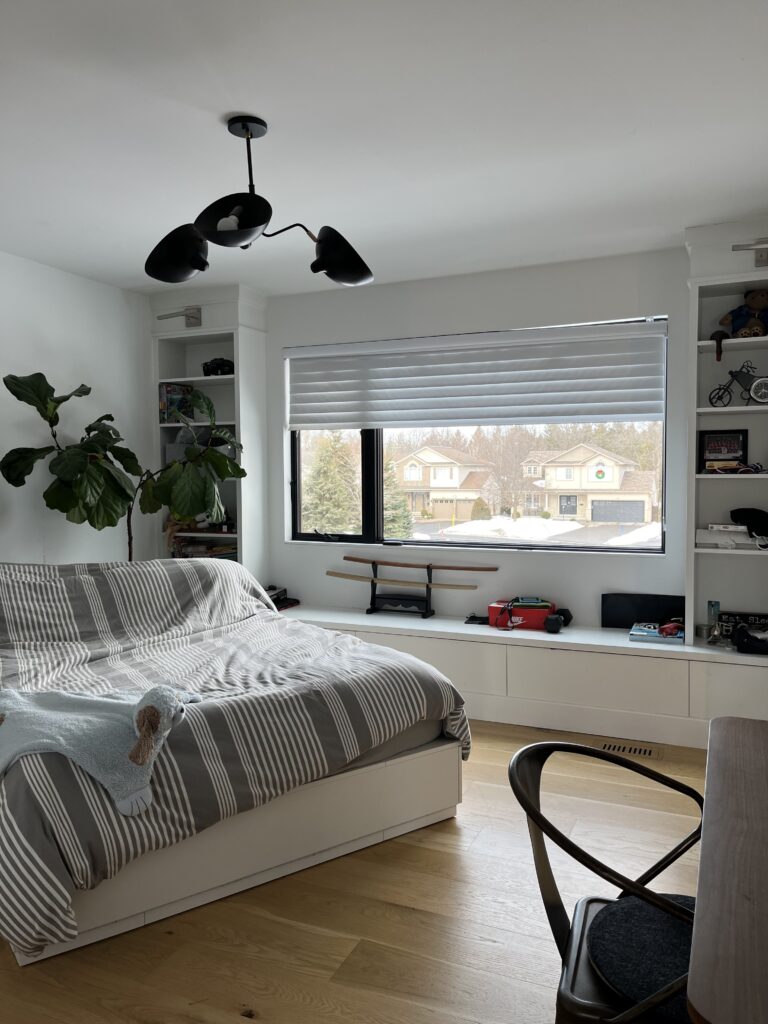
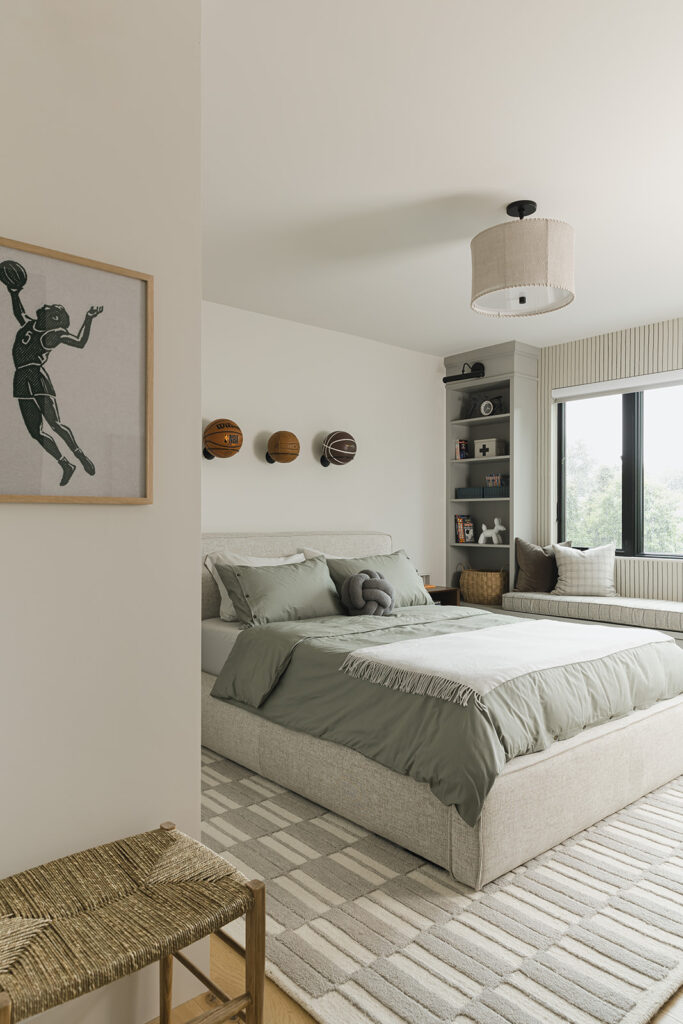
Project Slam Dunk – Before (Left), Project Slam Dunk – After (Right)
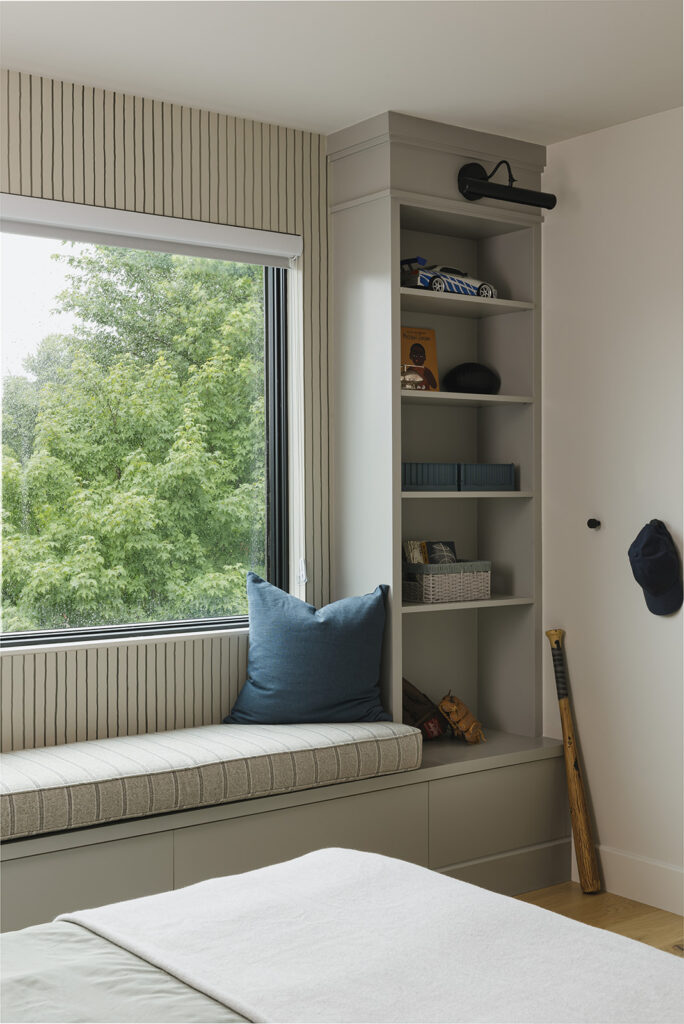
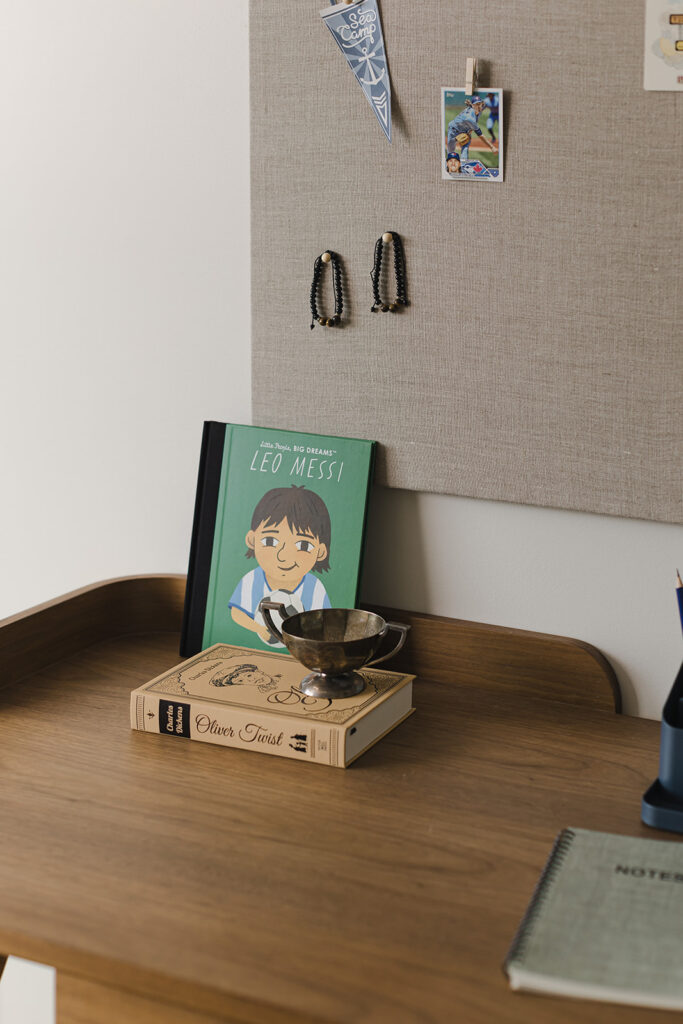
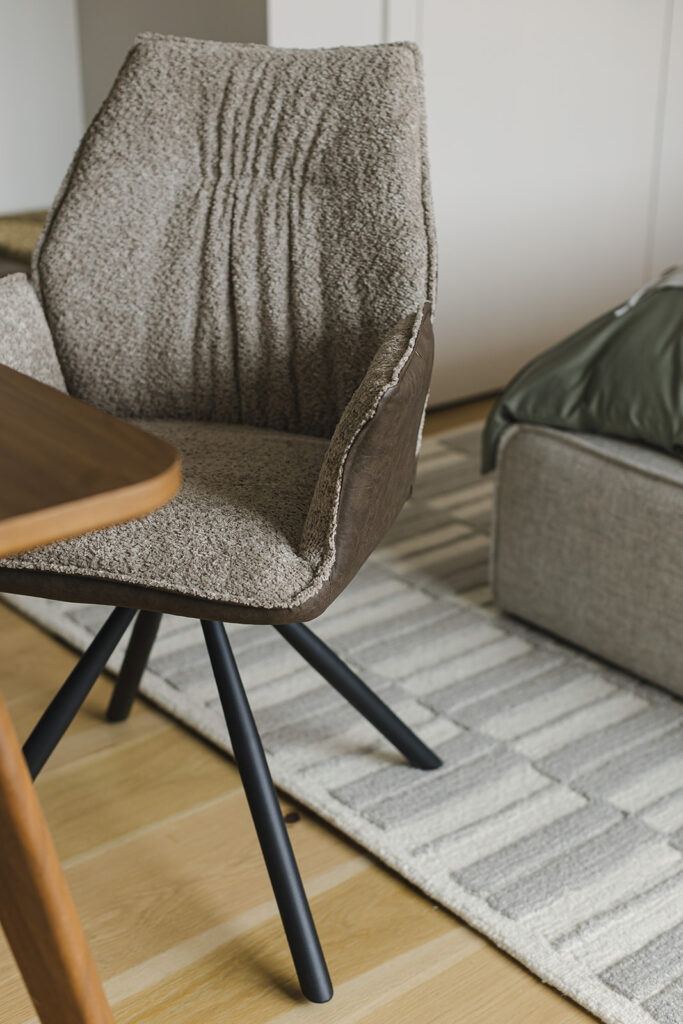
3. Have Fun & Be You
Watching children take to their (always-changing) interests – whether it’s a space obsession or bright colour preference – reminds us that authenticity is always in style.
It’s way more fun to be YOU, anyway! It’s also more fun to get everyone in the family involved in home design and decor choices.
While it might seem easier to have the final (or only) say in everything, inviting kids into the creative process brings unexpectedly great things.
Personally, my daughter Aubrie has developed this sweet habit of refreshing her sheets with the seasons and experimenting with her nightstand placement, while my son Oscar enjoys finding new ways to proudly showcase his hockey jerseys and medals.
The bonus? How much EASIER room cleaning and toy sorting (and donating) is now that my kids feel invested in their spaces – they’re not just tidying up, they’re caring for something they helped create.
Project-wise, Mellow Yellow demonstrates this so nicely. Instead of discouraging two brothers’ bold colour preference, we chose to celebrate their yellow obsession as the design’s guiding star. The boys ended up LOVING their new space and felt super connected to it.
That’s the whole point of interior design, isn’t it? To showcase our personality and find ways to enjoy our homes.
Beyond playful palettes – from sunnier tones like yellow to varying reds more recently – you’ll always find me mixing patterns, such as stripes and florals or nature-inspired prints with plaid. I find a room feels much more relaxed and interesting when your eye has different patterns to discover.
4. Inspiration Is Everywhere
Children are pros at making magic out of everyday moments. They see a cardboard box and envision a spaceship. Rugs become lava. And wooden spoons become wands capable of casting the best spells.
As an interior designer, it’s always fun for me to play off of this inspiration, pulling together mood boards from a variety of unexpected sources – whether that’s from music playlists, a special scent, a favourite drink, or a movie watched on repeat. The key is looking beyond the obvious and asking: what feeling are we trying to create here?
With that in mind, take a look at this Shimmer & Shine project. Any guesses where I gathered the vision from?
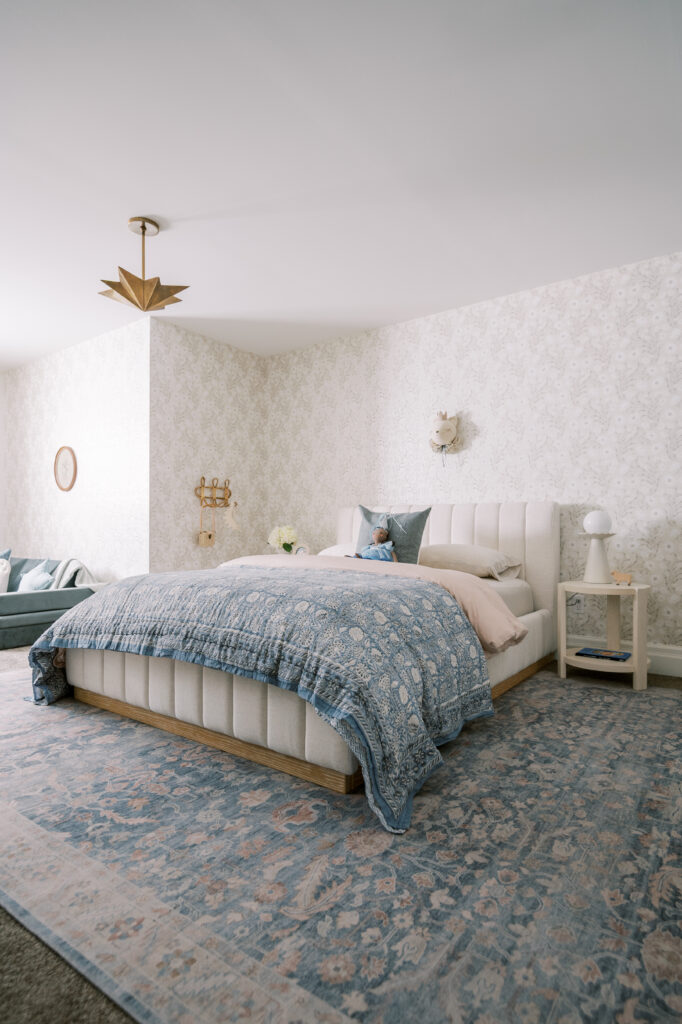
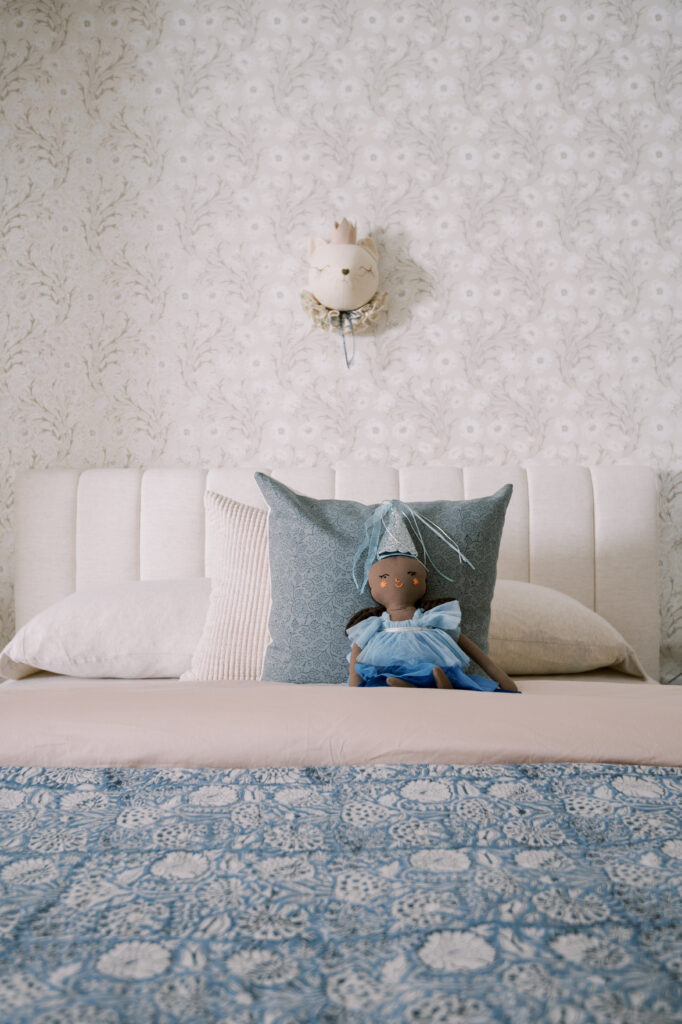
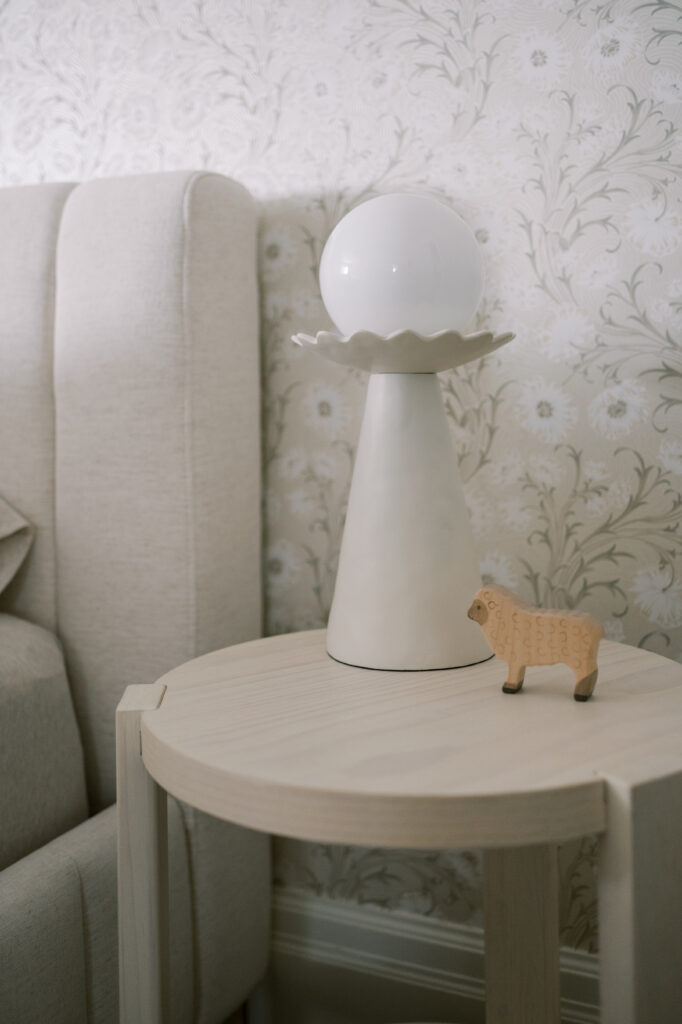
Frozen – this mini client’s favourite. You won’t find Elsa and Anna on the walls, but you will feel that same sense of wonder that makes the movie so captivating, thanks to the iridescent wallpaper and a table lamp and mirror that give major ice castle vibes.
This is all to say that inspiration isn’t always written on the wall in obvious ways. But when you notice the subtle details, it invites a sense of discovery – like finding hidden treasures in your own home that make you smile each day.
5. Performance Fabrics & Smart Storage Solutions Matter (More Than Ever)
Sticky fingers, spills, and toy piles moving from one room to the next are an inevitable part of living with children.
Practicality is essential when creating aspirational family space. Discovering quality performance materials that can withstand whatever your kids throw at them (sometimes literally) and creative storage solutions that make tidying up a little easier on everyone is everything.
Many retailers now offer fabrics that feel soft and inviting while being surprisingly resilient. When it comes to rugs, I enjoy talking through all the options with families – some would rather sacrifice a fabric that’s super easy to clean for it to be 100% natural, while others want a more economical polyester flat woven rug because they know it isn’t too precious and can be wiped down without any trouble.
Both choices have their place, so it’s really about explaining the pros and cons. That way, each family can determine what feels right.
If you’re ready to start shopping for pieces that deliver on both style and practicality, Loloi is one of my favourite rug sources. And I’m constantly pleasantly surprised by European brands like Garbo&Friends, Camomile London, Main Sauvage, Liewood, and OYOY – they’ve mastered that balance of sophisticated decor with family-friendly functionality.
6. Don’t Be Afraid of Change
Just as we adapt to new phases with our children, learning what works and pivoting when it doesn’t, our homes should grow with our family.
There’s something wonderfully comforting about embracing this mindset in design, knowing each stage and phase deserves to be enjoyed.
Your living room might start as a toy-friendly play zone during the toddler years and eventually become a homework station with cozy reading nooks.
Those early years as a parent can be beautifully chaotic, with toys making themselves at home in every corner. I learned to organize in ways that kept me sane while accepting that this was simply our season. Now that my kids are a bit older, their belongings have naturally migrated to their rooms and our basement playroom, creating a better flow.
It’s a journey I love being part of. I’ve worked with families where we started with a dreamy nursery, then thoughtfully adapted the same room for a toddler’s needs a few years later. The design integrity remained, but the functionality evolved nicely.
Project Blue Skies (Nursery)
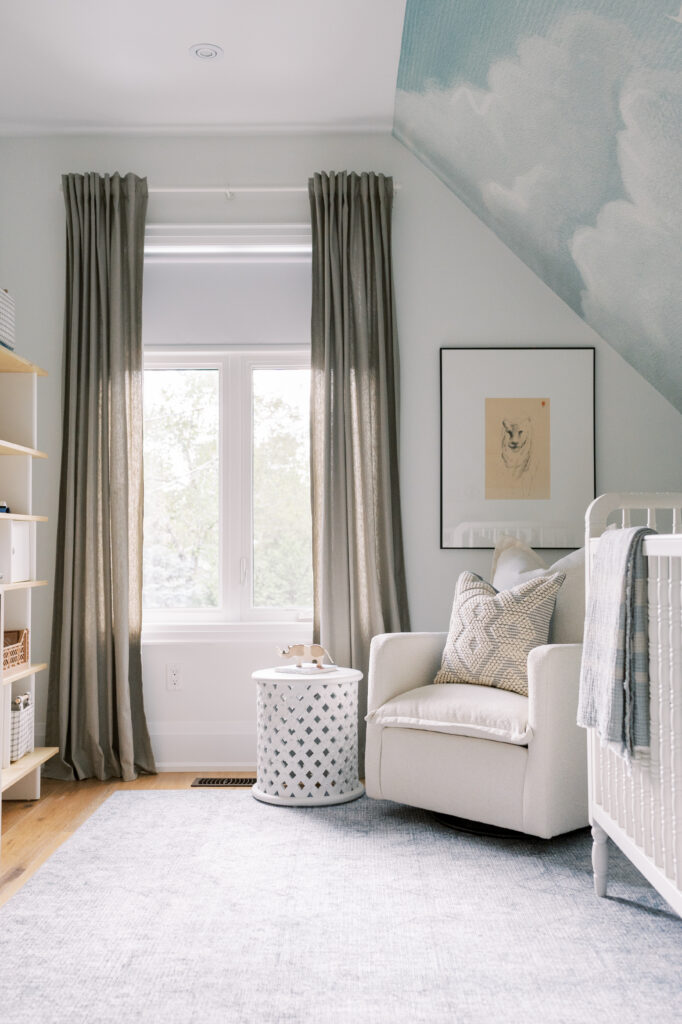
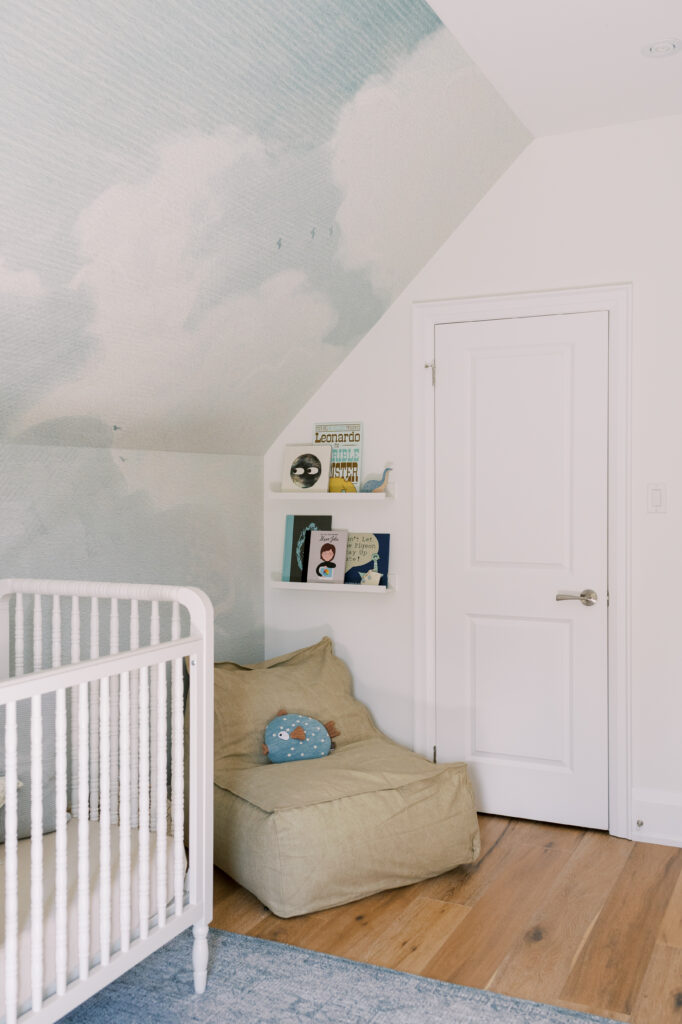
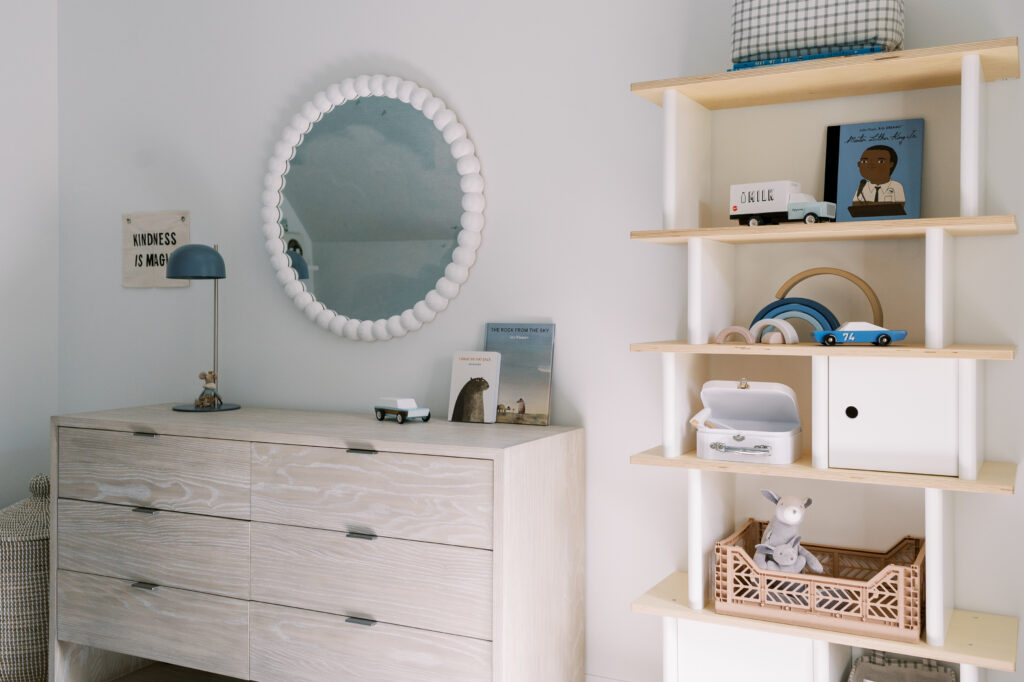
Project Blue Skies (Toddler Room)
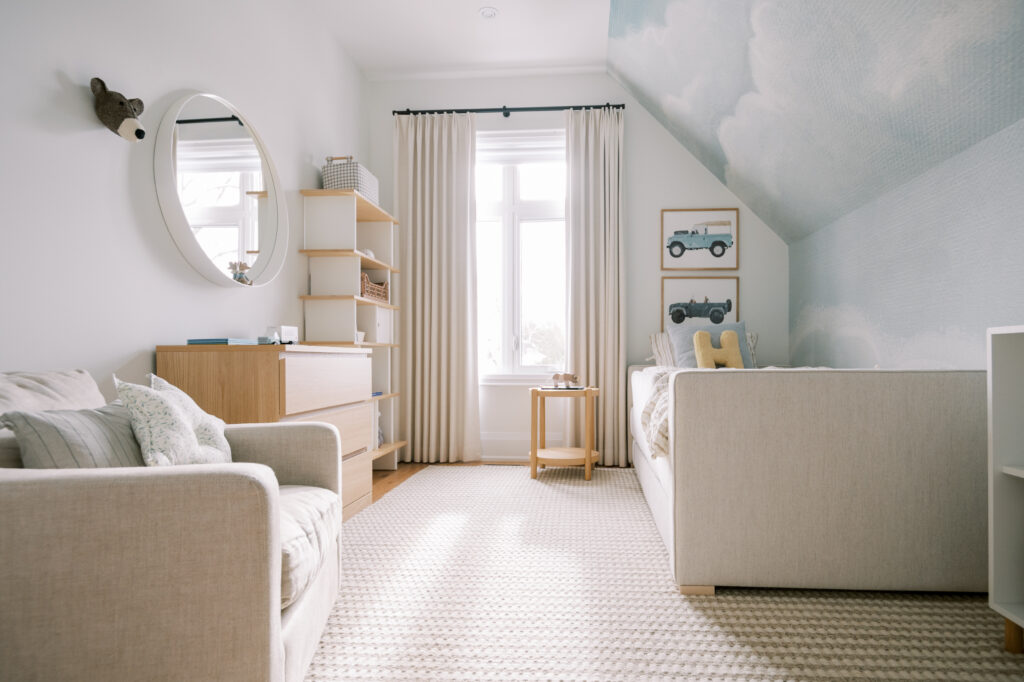
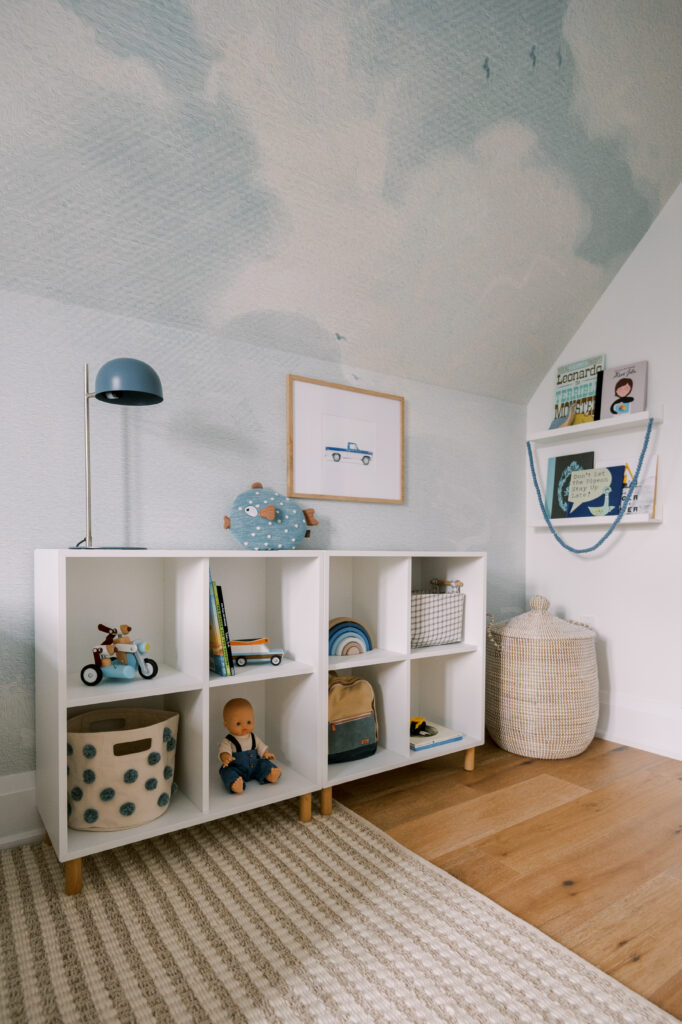
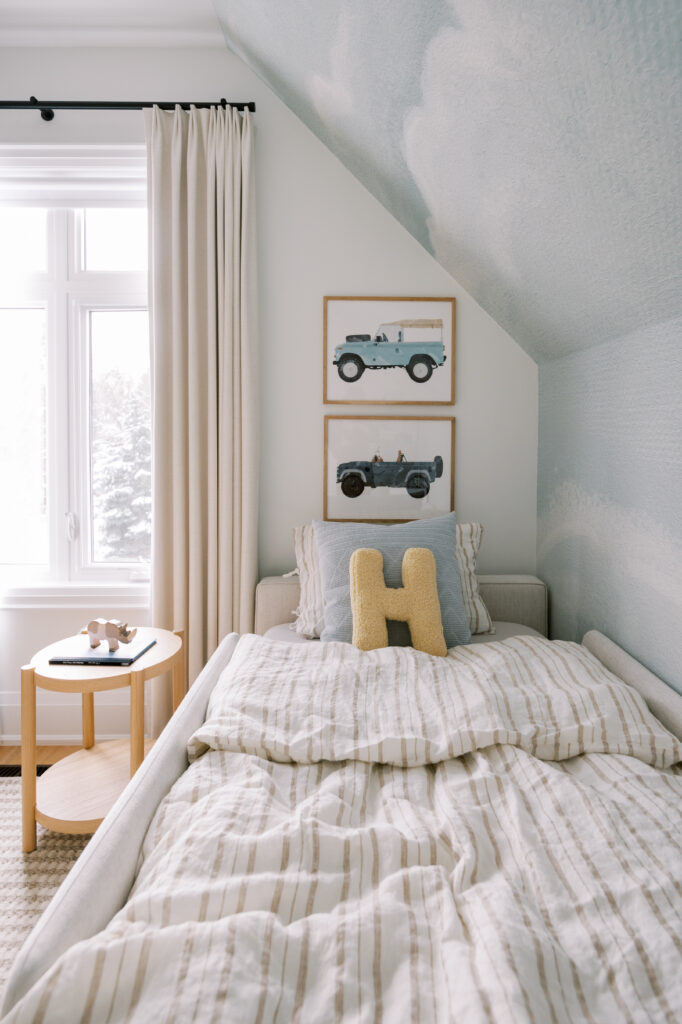
Another important reminder – it’s perfectly natural for our style preferences to shift over time.
Personally, having children completely transformed my design perspective in the most wonderful way. Before them, I was never a big fan of patterns or wallpaper, and my home was a bit more neutral. But because of them (and my mini clients!), I have a new appreciation for more playful designs.
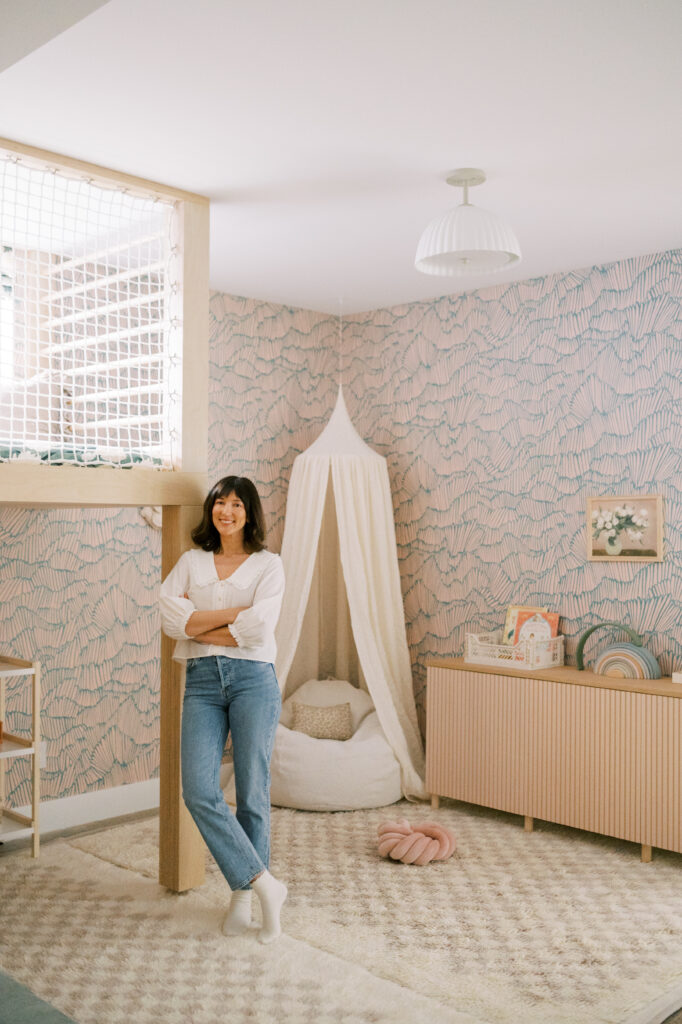
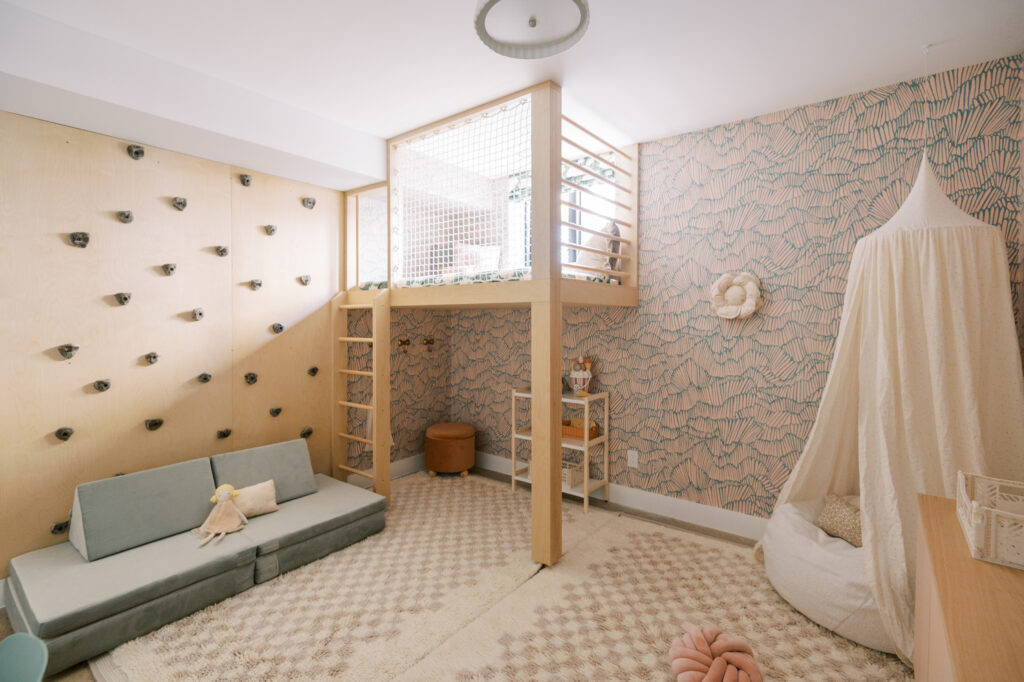
7. Set Realistic Expectations
Parenthood strips away the illusion of control faster than anything else. You can have the perfect nursery, the best sleep schedule, and ALL the books and advice at your disposal, but your child will still have their own timeline, preferences, and personality.
Learning to adapt your expectations to reality could be the most valuable skill. It’s also the not-so-secret building block of creating homes that work for real families.
This mindset shift changes everything about how we approach interior design. Instead of creating rooms that are too precious and require constant effort to maintain, we focus on spaces that can roll with the punches while still feeling refined and whimsied.
By approaching the process with mindfulness and realistic expectations about both the journey and the outcome, you end up with a home that truly supports how your family lives. That’s worth every bit of patience and planning it takes to get there!
Both parenthood and interior design are ultimately about the same thing: creating environments where we can thrive, grow, and be our best selves.
So take a fresh look around your home today – what’s working, what isn’t, and what small changes could make your everyday life feel a little more whimsical?
Maison Ellie specializes in full-service and virtual interior design for every stage of family life, working closely with clients to reimagine loving houses into calming, fulfilling Maisons across North America and beyond. Inquire about your project.
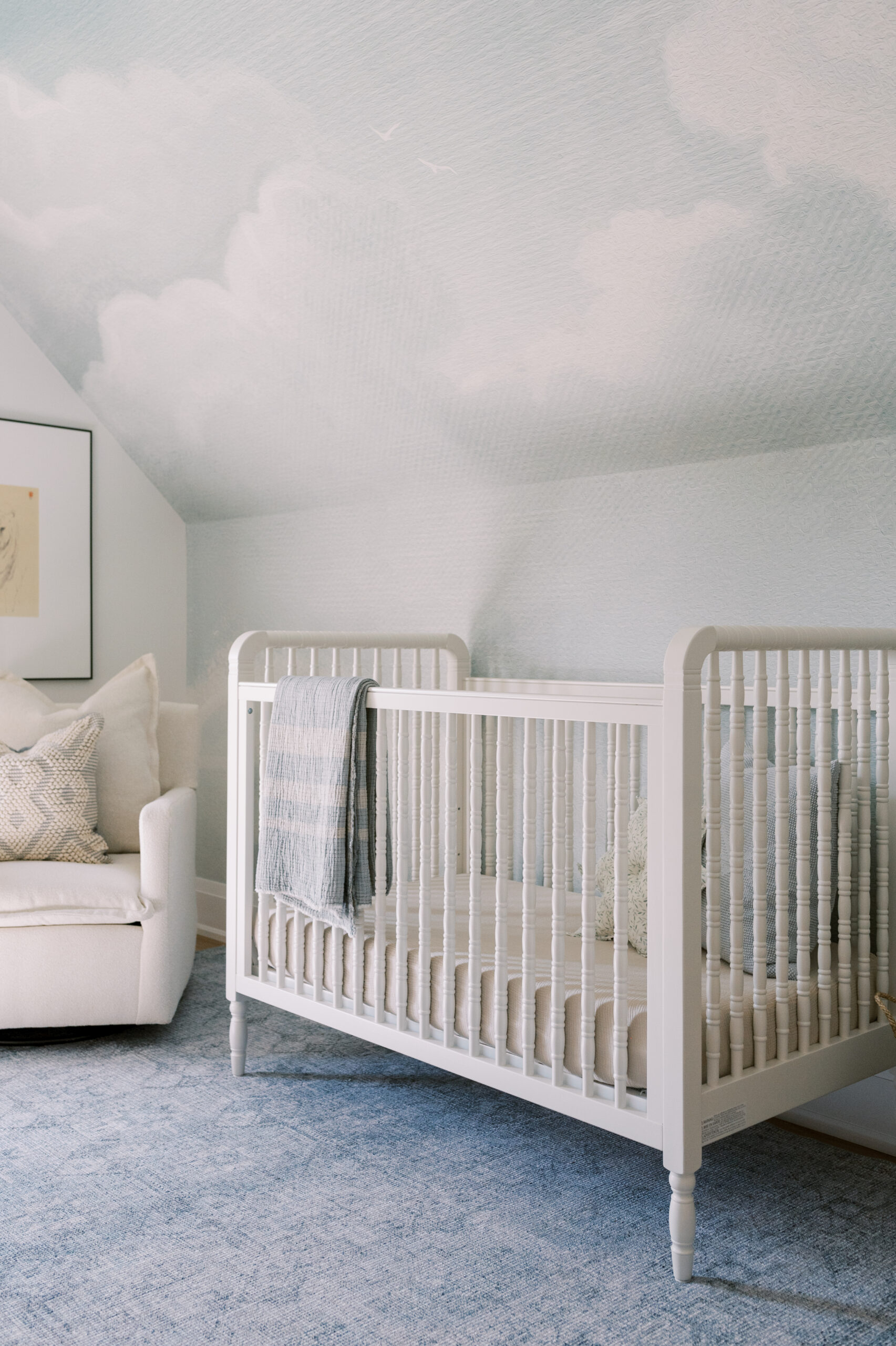
Be the first to comment